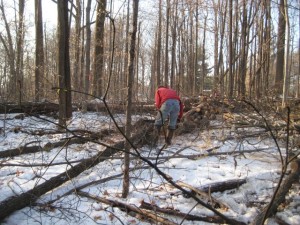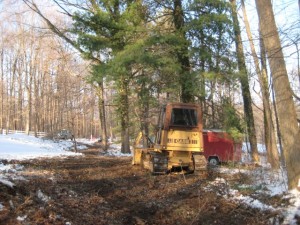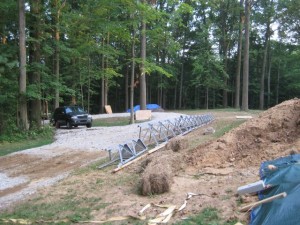After I had made the decision to put up a tower I realized I didn’t know where to start. After doing some initial research on the internet I found a few sites where other hams chronicled their own tower installations. Most of those sites focused on the actual installation of the tower and did not cover any of the preliminary steps such as:
- Site selection
- Building permit preparation and approval
- tower and antenna selection
- RF Exposure analysis
- Selection of all of the other components needed to make the system work (rotor, rotor control, coax, rotor cable, switching and lightning protection and grounding).
I then purchased three books that I found very helpful. They were Up the Tower, by Steve Morris, Antenna Towers for Radio Amateurs by Don Daso and Antenna Zoning for the Radio Amateur by Fred Hopengarten. After reading each of these books cover to cover I quickly realized that a lot of planning and preparation would be needed to insure a reliable, long lasting and well performing tower installation.
My next step was to contact W9RE, a local ham I knew had significant experience installing and maintaining towers. W9RE, Mike, is a legend in the ham radio world for his world class performance in contests. His station also has a world class antenna farm!
Mike visited my house and helped me scope out a couple of potential locations for the tower. Mike pointed out that a number of trees would have to be removed to make room for the tower and beams. It also appeared that additional trees might have to be removed to make the space needed to actually erect the tower. Mike also, suggested the names of a couple of hams that might be willing to do a turnkey installation.
I thought my dreams of a tower were about to come to and end since my wife was not pleased at the prospect of having to remove a lot of trees to make room for a tower. Fortunately, another event occurred that made the issue of the trees a moot point. Our septic system failed. After a visit by the local health inspector it was determined that we would have to install a new septic field. Because of the new stringent regulations governing septic systems in our county we were told we would have to clear nearly an acre of woods behind our house to make room for the new septic field! I would not be allowed to install my tower in the septic field, but the removal of nearly 100 trees would open up a lot of space that could be used to erect the tower.
The process of clearing the field for the new septic field started in December 2010. However, because of the weather and other factors the tree removal took nearly four months. The building code required that the trees and a large portion of the roots had to be removed. Her are a few more photos showing that process. There were chains saws, a bulldozer and backhoe busy for weeks clearing the field to make room for the new septic system. Several tri-axles full of wood had to be hauled away.
The next issue we ran into was that we had to build a second driveway to provide access to the new septic field otherwise we would have to wait until August for the ground to get solid enough to bring in the tanks, gravel and other items needed for the septic system.
The photo to the right shows the new driveway before it was layered with 15 loads of crushed stone.
In the end, the new driveway was very useful during the tower installation. It enabled easy access by the concrete trucks and ultimately by the 120′ crane that was used to erect the tower and antennas.
The photo to the right shows a portion of the new driveway along with several tower sections waiting to be assembled. The dirt to the right is from the excavation for the tower base.
In the next installment I’ll talk about the preparing the building permit and some of the other planning that had to happen before actually starting the construction of the tower.
73,
Fred






